July 13, 2015
By Jon E. Silks
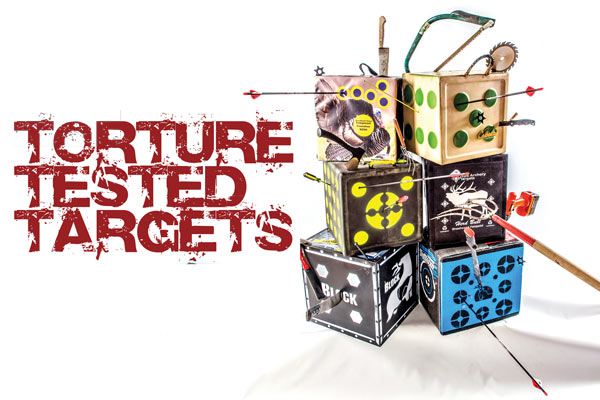
Are you old enough to remember the classic Tootsie Pop commercial where the boy asks the owl professor, "How many licks does it take to get to the Tootsie Roll center of a Tootsie Pop?" Well, if you don't remember it, chances are you are a whiz with the Internet — look it up!
This third installment of our Practical Bowhunting Test Series focuses on a similar pondering — how many shots does it take to get through to the other side of a broadhead target?
It seems whenever you see an advertisement for an archery target, they all claim to last forever, stop any arrow, employ superior material, be lightweight and easy to carry and incorporate the most revolutionary technology this side of the International Space Station. Oh, and of course they also boast of easy arrow removal!
Advertisement
Well, if you have been bowhunting long enough you already know creating a single archery target that excels in all those areas is practically impossible. You may get a target that is lightweight only to find you blow it out in a few rounds.
Or, you may find a target that stops an arrow wonderfully€‰€¦€‰and keeps it! I still remember going to a huge 3-D shoot with a few friends and struggling on one particular target to remove an arrow.
How silly we would have looked if an outsider had seen us as we strained, twisted, put our feet on the target for counter pressure, rested a minute and then repeated until we could claim victory over the simulated 80-pound deer with a suspicious-looking smirk on its face!
Advertisement
The bottom line is that while you may not think building a quality archery target is difficult, it certainly isn't a simple task. With that in mind, we decided to develop tests to measure two of the most important considerations when choosing a broadhead target — durability and ease of arrow removal.
We chose to test six of today's most popular broadhead targets, representing three distinct target styles. Two targets — the Block Vault L and Delta Bowhunter ShotBlocker — represent horizontally layered foam models where the target material lies parallel to the arrow's path.
Two more — the American Whitetail Compound King and HIPS Herd Bull — represent vertically layered foam models where the target material lies perpendicular to the arrow's path.
And the final two targets — the Cabela's Elite Stop and Rinehart RhinoBrute — represent solid foam models.
American Whitetail Compound King
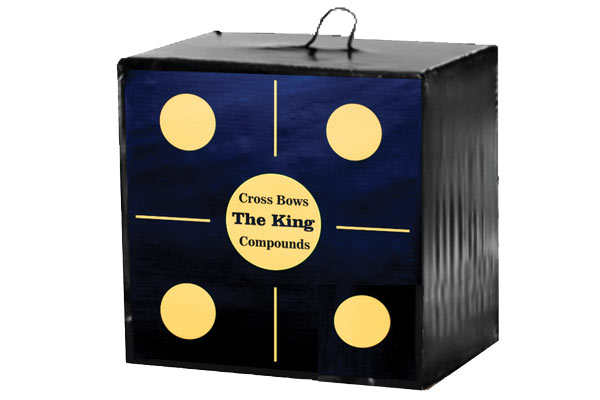 Measuring 16x16x18 inches and weighing 10 pounds, the American Whitetail Compound King ($59.95) is designed strictly for broadheads and features multiple foam layers that lie perpendicular to the arrow's flight path.
Measuring 16x16x18 inches and weighing 10 pounds, the American Whitetail Compound King ($59.95) is designed strictly for broadheads and features multiple foam layers that lie perpendicular to the arrow's flight path.
Layers of increasing density foam bring the arrow to a halt while balancing durability with ease of arrow removal. The outer layer of foam has a lower density for better self-healing properties, which reduces slivering and extends target life. Beyond that is a secondary layer of medium-density foam, followed by high-density foam for maximum stopping power.
Block Vault L
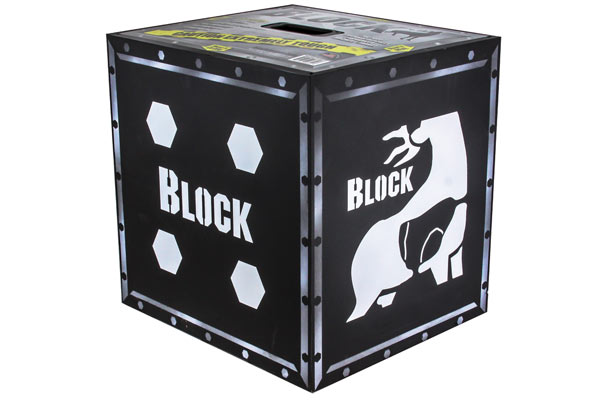 Block's new Vault series is available in four sizes, and all incorporate an integrated carrying handle that makes toting them easy and comfortable. The Vault L ($139.99) measures 18x18x16 inches and weighs 17 pounds.
Block's new Vault series is available in four sizes, and all incorporate an integrated carrying handle that makes toting them easy and comfortable. The Vault L ($139.99) measures 18x18x16 inches and weighs 17 pounds.
The open-layered Polyfusion Technology locks the high-density core to the target wall, ensuring individual layers of foam stay in place when hit head on. This allows arrows to slide between the layers, resulting in easier arrow removal and longer target life. Four sides with multiple offset aiming points provide variety for your fieldpoint or broadhead practice sessions.
Cabela's Elite Stop
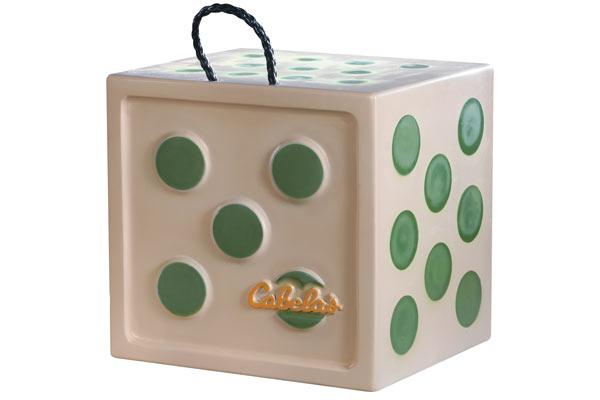 Cabela's is all about bringing customers value, and with a combination of Rinehart's Solid FX Foam Technology and a price under $100, the Elite Stop target ($99.99) is hard to beat.
Cabela's is all about bringing customers value, and with a combination of Rinehart's Solid FX Foam Technology and a price under $100, the Elite Stop target ($99.99) is hard to beat.
Measuring 15x15x13 inches and weighing 11.2 pounds, the Elite Stop provides six shootable sides with bright aiming points of various sizes and a self-healing core. The target can be used with both compounds and crossbows, as well as with broadheads or fieldpoints.
Delta Bowhunter ShotBlocker
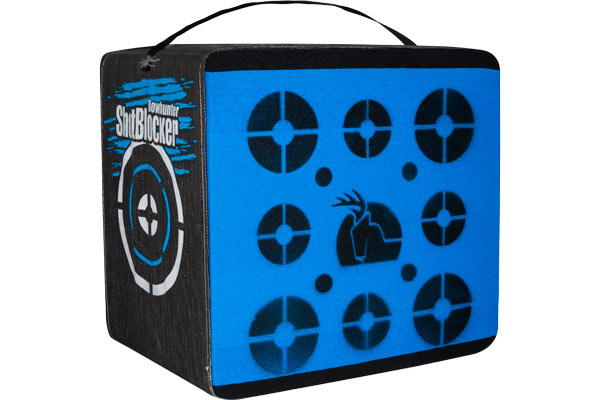 Delta's ShotBlocker line includes 10 models, all featuring a Welded Core Technology designed to eliminate pass-through shots while providing easy arrow removal. Foam slivers and chunks are held to a minimum with a uniform foam compression process.
Delta's ShotBlocker line includes 10 models, all featuring a Welded Core Technology designed to eliminate pass-through shots while providing easy arrow removal. Foam slivers and chunks are held to a minimum with a uniform foam compression process.
The four-sided Bowhunter ShotBlocker ($84.99) measures 18x18x14 inches, weighs 12.3 pounds and is designed to handle broadheads and fieldpoints from arrows traveling up to 350 fps. The ShotBlocker Bowhunter is also available with optional Arrow Shield Technology, which is a wrap intended to slow arrows and increase durability.
HIPS Herd Bull
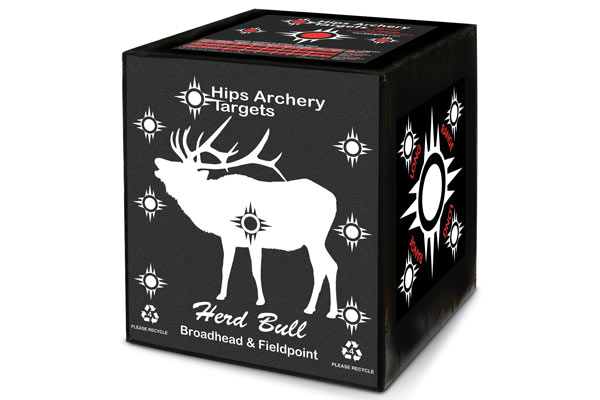 HIPS Archery has been making targets for more than 35 years and is proud to offer its new X2 Target
HIPS Archery has been making targets for more than 35 years and is proud to offer its new X2 Target
Series, which includes the lightweight Herd Bull ($149.99) measuring 18x16x16 inches and weighing just 7 pounds.
All six models in the X2 Target Series feature multiple, 2-inch vertical layers of variable-density HIPS Endurance Foam, fused together by heat welding. The self-healing Endurance Foam is designed to resist shredding for longer life and deliver easy arrow removal. X2 Targets also offer six shootable sides featuring a tuning aid and Tic-Tac-Toe game to provide utility and fun while setting up or practicing with fieldpoints or broadheads.
Rinehart RhinoBrute
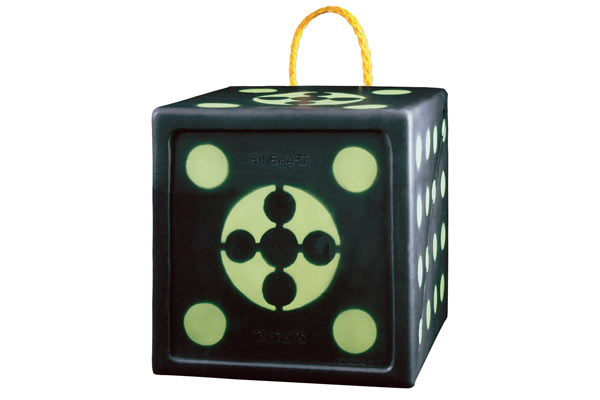 Rinehart's solid foam RhinoBrute ($229.99) welcomes all comers — vertical bows, crossbows, fieldpoints, fixed-blade broadheads and mechanicals.
Rinehart's solid foam RhinoBrute ($229.99) welcomes all comers — vertical bows, crossbows, fieldpoints, fixed-blade broadheads and mechanicals.
Rinehart's self-healing foam closes arrow holes in 10 seconds, meaning this target will be ready for the second shot before you are. Rinehart's foam is also UV resistant, meaning it will hold up under years of exposure to the sun. The RhinoBrute measures 16x16x16 inches and offers six shootable sides with aiming points of various sizes. At 21.3 pounds, this was the heaviest target we tested, but still fairly easy to transport via the incorporated rope carrying handle.
Test Setup
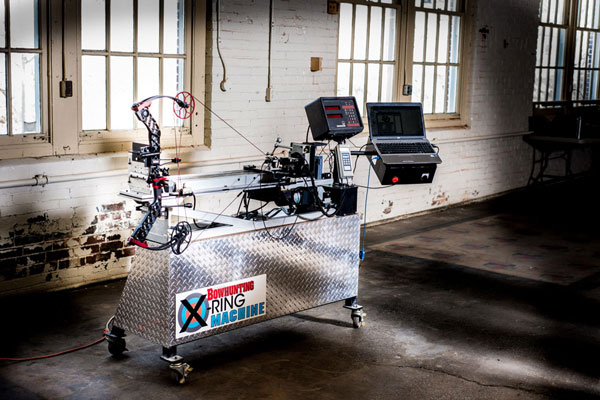
As usual, our exclusive Petersen's BOWHUNTING X-Ring Shooting Machine is exactly what the doctor ordered for this test, thanks to its ability to stack arrow after arrow in essentially the same spot. The X-Ring Machine weighs approximately 300 pounds, is motor driven and controlled by a custom computer program that allows us to test quickly and precisely.
A Mathews No Cam HTR with a 29-inch draw length, 60-pound draw weight, nocking loop and NAP QuikTune 3000 arrow rest was set up and tuned on the X-Ring Machine using two different arrows.
The first was an Easton Deep Six Full Metal Jacket with a 400 spine, an outside diameter of .233-inch and a weight of 427.5 grains. The other was a Beman ICS Hunter, 340 spine, with an outside diameter of .298-inch and a weight of 421 grains. Arrow speed was 264 fps for the Deep Six FMJ and 266 fps for the ICS Hunter.
Durability Test
Our goal was to develop a test that would measure the relative durability of our six test targets. To do that, we operated from a premise that a target that resists penetration (takes more shots to reach a certain depth) in a single spot to a greater degree than another target is considered to be more durable.
To conduct the durability test, we tipped each of our two arrow models with Muzzy Trocar fixed-blade broadheads and used the X-Ring Machine to shoot repeatedly into a single spot on the target until a pre-determined depth of penetration was achieved.
Both arrows were marked at a point on the shaft that corresponded to the overall depth of the thinnest test target, which was approximately 13.5 inches. Once the marked depth was reached, any additional penetration beyond the mark was measured and recorded.
Testing was conducted at a range of 20 yards, which is a popular practice distance. We used a fresh broadhead for each target model, and each broadhead was used for only six shots before being replaced with a brand new head. A shot was considered valid if the shaft touched the shaft hole from the previous shot. If we had a flyer — and at times we did — we disqualified the entire series. In other words, we did not allow an errant shot to impact the overall test results.
Before getting into the durability results, there are several important points that must be made.
First, it is imperative to note that very slight variations in the placement of the broadhead can result in very different physical effects inside the target. For example, if you hit exactly the same each time in terms of both impact point and broadhead rotation (blades in the same exact slice in the target), you will get very little shredding of the target material.
However, just a slight rotational difference in the broadhead blades could result in a significant amount of shredding. And of course, even with the superior accuracy achieved via our X-Ring Machine, we cannot make the broadhead blades strike the target in the exact same blade orientation shot after shot.
For that reason, readers ought to keep in mind that any test results that are close between two models easily could have gone the other way. Overall, however, you will see clear patterns among target styles that should help you select the right target for your application, budget, etc.
Second, you must keep in mind that because our X-Ring Machine allows us to hit targets in virtually the same spot shot after shot, the number of shots required to achieve a given depth of penetration is likely to be lower than the average bowhunter would experience on the practice range.
In other words, most of us cannot shoot as accurately as the X-Ring Machine! And for that matter, most of us do not aim at only a single spot shot after shot after shot. There is a reason virtually all archery targets have multiple aiming points, and spreading out your arrows will certainly prolong target life.
Bottom line: our durability test results should be viewed as a relative gauge of target toughness but not an absolute answer regarding the number of shots a particular model can accept in one spot.
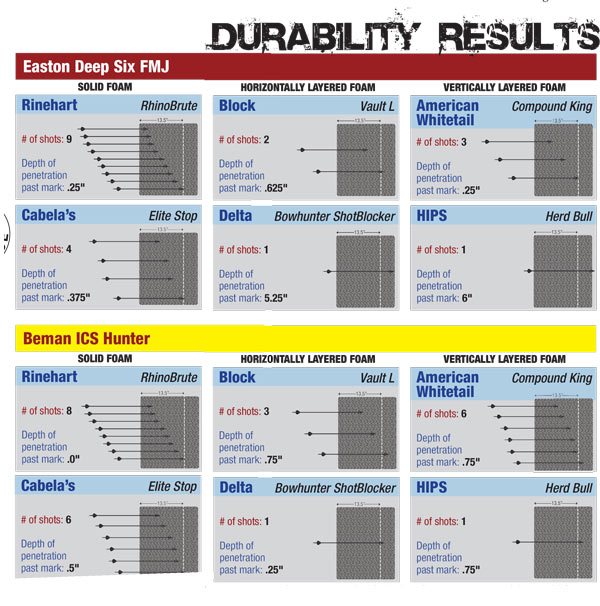
Arrow Pull Test
The amount of effort required to retrieve your arrows is an important consideration when choosing a target. So, we decided to test the amount of force required to extract shafts from our six test targets.
We tested both our arrow models first tipped with a Muzzy Trocar broadhead and then tipped with a fieldpoint. For each arrow and type of point, we fired three shots into unused and unblemished areas of each target. We then used a special fixture designed by test specialist Chad Smith to grab the back of the arrow and pull back directly in line with the arrow's impact angle. The amount of force required to remove the arrows, in pounds, was automatically calculated via a Chatillon DFE-200 gauge attached to the fixture.
Broadhead-tipped arrows were pulled only to the front surface of the target for the pull test. This was done after realizing that certain targets would cause the broadhead to snag on coverings, slivers and pieces right at the surface, which could potentially impact the results.
When I personally pull a broadhead from a target, I actually slow down when reaching the front surface and maneuver the head so I do not tear any coverings or dislodge more material than necessary. Once you are at or very near the target surface, all the heavy pulling is done; you may just have to finesse it from there.

Summary
As mentioned earlier, when considering durability test results, it is important to keep in mind this is a spot test only; a single, very precise spot. It does not take into account how many shootable sides each target offers, the surface area per side or how resistant a particular target material is to slivering or withstanding the elements.
Second, remember that for the purposes of this test, we selected a mid-range hunting bow in terms of arrow speed and set it to a 29-inch draw length with a modest, 60-pound draw weight. We also shot arrows that weighed in the 420-grain range, which is on the heavier side of average for hunting arrows. The bottom line is that this is not an aggressive setup, and you need to take that into account if you are drawing considerably more weight or shooting the latest speed bow.
Finally, how you interpret these results should depend on what is important to you. Is it durability regardless of cost? Or is it a combination of qualities such as easy handling, durability, cost and ease of arrow removal? How often do you shoot broadheads vs. fieldpoints?
Many archers ensure their fieldpoints and broadheads are impacting the same spot, or very close to the same spot, so they can do most of their practice with fieldpoints. Whatever your needs and preferences, there is likely a target among our test models that will fit your needs and budget.
